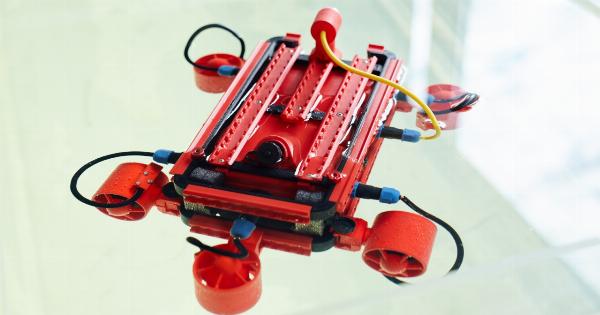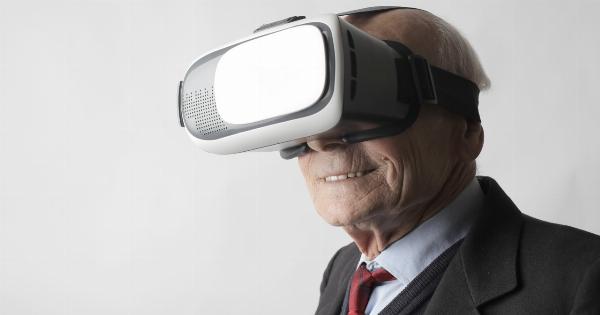Emotion detection technology refers to the capability of a device to identify and interpret human emotions.
It is a subset of facial recognition technology that focuses on recognizing and analyzing an individual’s facial expressions to determine their emotional state. This technology has gained prominence in recent years, thanks to advancements in artificial intelligence and machine learning algorithms.
How Does Emotion Detection Technology Work?
Emotion detection technology primarily relies on computer vision and image processing techniques.
It involves analyzing various facial features, such as eyebrow movement, eye widening, lip curvature, and other micro-expressions, to gauge an individual’s emotional state accurately. The process typically involves the following steps:.
-
Data Gathering
The first step in emotion detection technology is the collection of data. This involves capturing images or videos of individuals’ faces in different scenarios and emotional states.
The data collected serves as training material for the AI models that power the emotion detection algorithms.
-
Feature Extraction
Once the data is collected, the next step involves extracting relevant features from the facial images or videos. Common features include eyebrow shape, eye openness, mouth curvature, and nose wrinkles.
These features are then used as input for the emotion detection algorithm.
-
Machine Learning Models
Machine learning models play a crucial role in emotion detection technology. These models are trained using the extracted features and the corresponding emotional labels provided in the training data.
Various algorithms, such as convolutional neural networks (CNNs) and deep learning models, are employed to develop accurate emotion detection models.
-
Emotion Prediction
Once the models are trained, they can be used for real-time emotion prediction. The input to the model is a face image or video stream, and the output is a predicted emotional state, such as happiness, sadness, anger, or surprise.
The emotion detection algorithm analyzes the extracted features from the input to determine the most likely emotion being expressed.
Applications of Emotion Detection Technology
Emotion detection technology has numerous applications across various industries. Some notable areas where this technology is being implemented are:.
1. Market Research and Advertising
Emotion detection technology has found its place in market research and advertising. By analyzing consumers’ facial expressions, companies can gain insights into how their products or advertisements are perceived.
This data helps in designing more effective marketing campaigns and developing products that resonate with consumers’ emotions.
2. Healthcare and Mental Well-being
Emotion detection technology has great potential in the healthcare industry. It can aid in the diagnosis and treatment of mental health conditions like depression and anxiety by analyzing patients’ facial expressions during therapy sessions.
It also has applications in monitoring patients’ emotional well-being and providing timely interventions.
3. Gaming and Virtual Reality
Emotion detection technology enhances the gaming experience by allowing games to respond to players’ emotions in real-time.
It enables games to adapt difficulty levels based on player frustration, surprise them with unexpected challenges, or provide personalized content to enhance engagement. In virtual reality environments, emotion detection technology can create more immersive and interactive experiences.
4. Human-Computer Interaction
Emotion detection technology can revolutionize human-computer interaction by enabling devices to respond to users’ emotions. For example, a computer could detect if a user is frustrated or confused and offer contextual assistance.
It could also provide personalized recommendations based on the user’s emotional state, making interactions more intuitive and efficient.
5. Education and Training
Emotion detection technology has the potential to improve education and training methods. By analyzing students’ facial expressions, educators can assess their engagement and adjust teaching strategies accordingly.
It can also provide valuable feedback on the effectiveness of online training programs by monitoring learners’ emotional responses and levels of interest.
Challenges and Limitations of Emotion Detection Technology
While emotion detection technology holds promise for various applications, it still faces certain challenges and limitations. Some of the key challenges include:.
1. Accuracy and Reliability
Achieving high accuracy and reliability in emotion detection is a complex task. Facial expressions can vary widely across individuals, cultures, and contexts.
Additionally, factors like lighting conditions, occlusions, and facial hair can pose challenges to accurate emotion detection. Ongoing research aims to improve the robustness and adaptability of emotion detection algorithms.
2. Privacy and Ethical Concerns
Emotion detection technology relies on capturing and analyzing individuals’ facial data, raising privacy and ethical concerns. Proper measures must be in place to ensure the responsible use of this technology and protect user privacy.
Transparent data usage policies and consent mechanisms are essential to gain user trust and prevent misuse of personal information.
3. Cultural and Gender Bias
Emotion detection technology needs to account for cultural and gender differences in facial expressions. Facial expressions can be influenced by social and cultural norms, making it challenging to develop universal models.
Avoiding biased algorithms is crucial to ensure fair and accurate emotion recognition across diverse populations.
4. Real-Time Processing and Hardware Requirements
Real-time emotion detection requires efficient processing capabilities and suitable hardware.
While advances in computing power have made real-time emotion detection feasible, it still poses challenges for resource-constrained devices or systems with high computational demands. Optimizing algorithms and leveraging hardware acceleration techniques can help address these challenges.
Conclusion
Emotion detection technology has the potential to revolutionize several industries, offering new insights into human behavior and emotional responses.
From market research and healthcare to gaming and education, this technology opens up exciting possibilities for creating more immersive and personalized experiences. However, addressing challenges related to accuracy, privacy, and bias is crucial to enable the responsible and equitable use of this technology.




























